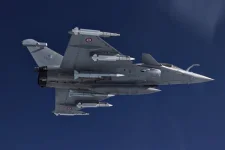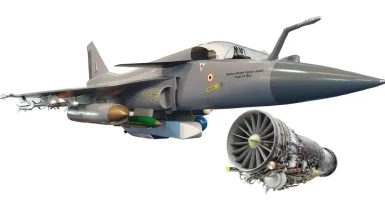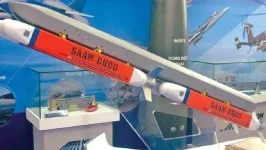- Views: 1K
- Replies: 7
A recent news report has brought to light an alleged precision strike by the Indian Air Force (IAF) targeting Pakistan's Bholari air base.
The operation, reportedly carried out using cruise missiles, is said to have targeted a hangar containing significant Pakistan Air Force (PAF) assets, including a Saab 2000 Airborne Early Warning and Control (AEW&C) aircraft and approximately three to four fighter jets of Western origin.
The strike is claimed to have resulted in substantial destruction, with debris clearance operations within the affected hangar yet to be initiated by the PAF, according to the report from Asian News International (ANI).
The ANI report suggests the IAF operation was carefully planned and executed, allegedly with live monitoring through Indian satellites and Airborne Warning and Control System (AWACS) aircraft.
The accuracy of the strike aims to highlight India's developed military capabilities and its capacity for targeted engagements against valuable assets. The Bholari air base, located in Sindh province, is a significant installation for the Pakistan Air Force.
In a separate incident detailed in the report, the IAF is also said to have launched an attack on another Pakistani air base located in the Punjab sector. This reported operation purportedly involved the launch of three missiles that impacted various sections of the base’s runways.
Consequently, the runways were rendered unusable for at least eight hours, effectively grounding PAF aircraft and impacting their operational readiness during that period.
These reported strikes are presented as an indication of India's advancing military strategy, which increasingly relies on sophisticated missile technology and real-time intelligence to target crucial enemy capabilities.
The destruction of the Pakistani Saab 2000 AEW&C, a vital platform for airborne surveillance, command, and control, would represent a considerable setback to Pakistan's air defence network. The Erieye system, used on the Saab 2000, significantly enhances a nation's ability to monitor airspace and manage air operations. Furthermore, the loss of several fighter aircraft would diminish the PAF's operational strength.
While official confirmation regarding the full extent of the damage from Pakistani authorities is unexpected, the described scale of destruction at the Bholari facility implies a lengthy recovery process.
The information that debris removal has not yet commenced is suggested as an indicator of the strike's severity and the difficulties the PAF might be encountering in restoring the base's operational capacity.
Operation Sindoor signifies a notable action by the IAF, demonstrating its purported capability to project air power and execute precise strikes. The use of satellites and AWACS for monitoring highlights an emphasis on integrating advanced technology within its military operations.
The global defence community is expected to closely observe the aftermath of these reported incidents, particularly extend of damages on Pakistani air bases and terrorist infrastructure.
For the present, the success of the IAF's operation serves as a clear indication of its strategic planning and operational preparedness in addressing national security concerns.





